
GALLERY FROM CUSTOMERS
www.awrtech.co.uk
|
GALLERY FROM CUSTOMERSwww.awrtech.co.uk |
Warwick MAY 2013
|
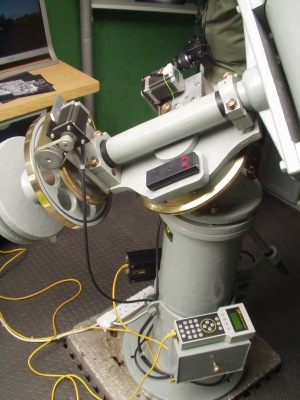 |
AWR attended the opening of Bruce Kingsley's Observatory earlier in 2008 by Sir Patrick Moore. The octagonal dome and telescope is ex Sir Patrick and has been lovingly restored and improved by Bruce. You will know Bruce's photos as many of his planetary shots have graced the pages of 'Sky At Night' magazine and programme. AWR brought the 1906 Browning mount up to date with a powerful GOTO system fitted. A worm and wheel (Phosphor Bronze rim by Beacon Hill Telescopes) was supplied for the Declination and intricate sprung motor brackets fitted to both axes. You cannot imagine the weight of the individual bits of the mount .... the 70mm dia DEC shaft and tube support weighed 40kg, the bell shaped pillar weighed 80kg etc. Transport to our workshop was hard but making the final azimuth adjustment for polar axis alignment was definitely very difficult! The payload has been tested up to 36kg with no noticable problem in tracking or goto performance at our workshop. The original 8 inch Newtonian in its cast iron tube is shown in the pictures. It is destined to take Bruce's 16 inch SCT.
|
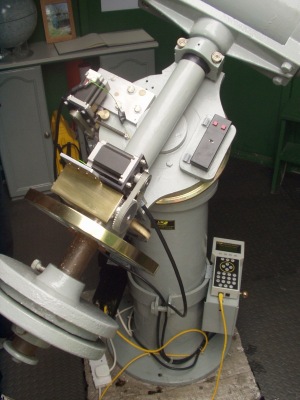 |
| Sir Patrick Moore seated, with a high resolution image of the Moon taken by Bruce (right). |
The Garden Party |
|---|---|
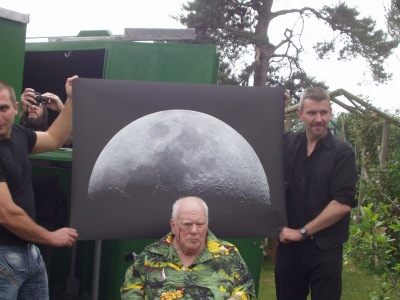 |
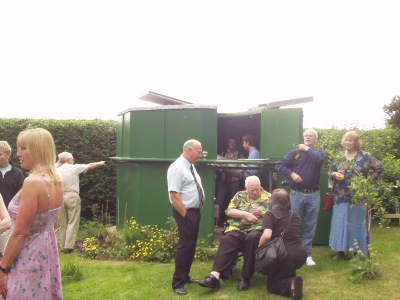 |
|
Here is that first quarter moon picture available shot through the 8 inch at high resolution taken at f16 using a Canon 350 DSLR. The image is a six frame mosaic made of 60 sub-frames. |
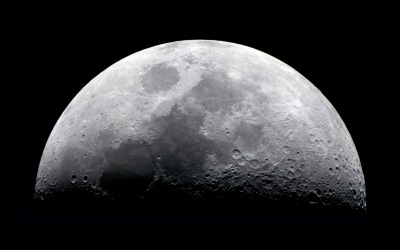 |
You have just got to see this at full resolution (140k byte).
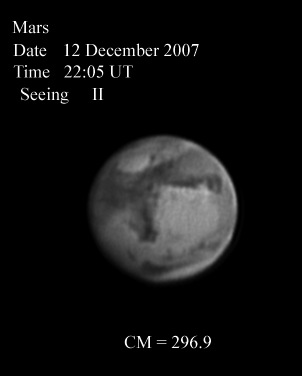 |
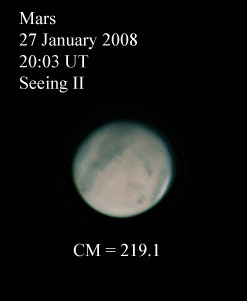 |
|---|
Here is the prototype Astroparts heavy duty GEM mount. It has the AWR heavy duty motors (MOTOR/210) driven by the AWR Microstep system and Intelligent Handset. It is in use by David Jackson who has supplied the pictures of celestial objects to show the following capablity. The affixed telescope is a Takahashi Epsilon 160 (f3.3) Newtonian with CCD camera in the focal plane. David is going to try his 12 inch f6 Newtonian next. It should have a load carrying capacity of 90lb with 10 inch diameter worm and wheel reductions. If you are interested in a heavy duty mount then maybe this one is for you. Please contact Astroparts about the mount and AWR about the Drives and GOTO system. |
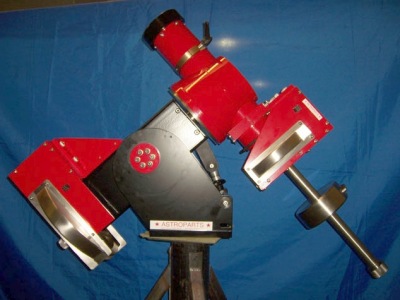
|
| This shows the Rosette nebula, and was taken with the Takahashi Epsilon 160 (f3.3) 10 m exposure L, and 5 m RGB binned 2 x 2,. using the Astroparts mount. The tracking log was essentially a straight line with less than +/- 0.5 pixel (pixel size is 7.5 microns). | 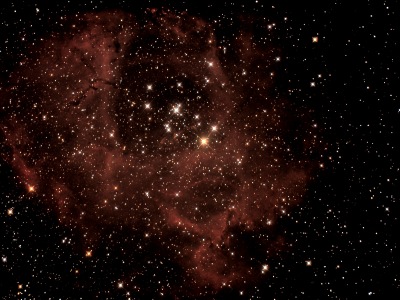
|
| Here is the ASTROFOX 36 inch telescope being installed in its dome for the Amateur Astronomers of Finland - URSA. AWR provided the motors, Heidenhain encoders, Microstepping drivebox and Intelligent Handset (all operating at 24 volts) to get the ultimate in performance from the mechanics. Designed encoder resolution is below 10 arcseconds, yet slew speeds up to 0.8 degrees per second. The external encoders go through our Quadrature Decoder Box and then into the Intelligent Handset instead of the normal virtual encoders. This means that the pointing accuracy and GOTO performance is as good as the external encoders and allows for some mechanical inconsistencies in the drive train. For further information contact AWR or ASTROFOX |  |
| Mounting with 0.9m RA and DEC drive wheels | Most of the scope...1 Most of the scope...2 |
|---|---|
 |
 |
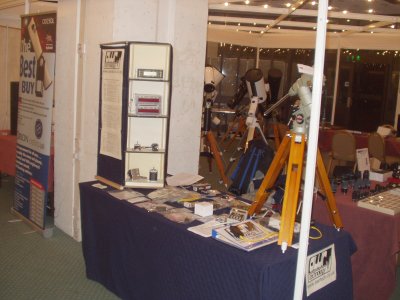 |
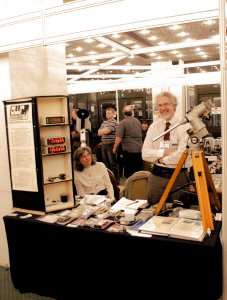 |
| This is the big one! A complete strip out of manufacturer's motors and electronics and replacement by new gearboxes and microstepping motors. AWR have designed the brackets and made the modifications. Just a few photographs here but an in-depth page of the LX Refurbishment to study. This is worth doing because the optics are excellent. The end result is a telescope with excellent tracking ability, slew at up to 2.4 degrees per second and it is quiet! The periodic error pulse is retained and now only has one period of 7 minutes 12 seconds. Backlash is minimised by keeping the sprung loaded worm. We can supply the items as a GOTO kit for you to fit. | 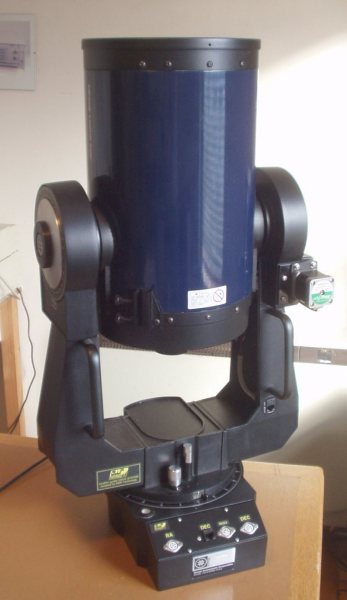
|
| RA Internals | |
|---|---|
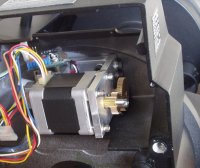 |
|
| DEC New gear wheel fitted | |
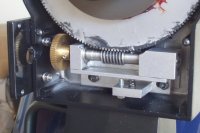 |
Most of the telscope and mounting is original 1896. The RA phosphor bronze worm / wheel is about 0.5m across in a large cast iron chamber providing the mass to keep the fork assembly and tube in place. It had several incarnations of tube appearance but now is a skeleton with A frame supports for the top end optics.
Visit Guildford Astro Society log on the refurbishment
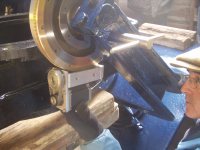 |
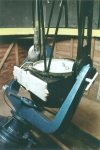 |
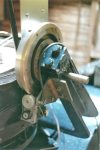 |
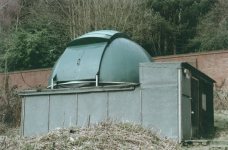 |
 |
 |
| NGC 6397 in Ara. Globular cluster mag +5.3 size 31 arc minutes |
|---|
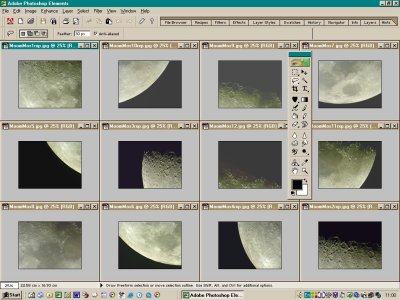 |
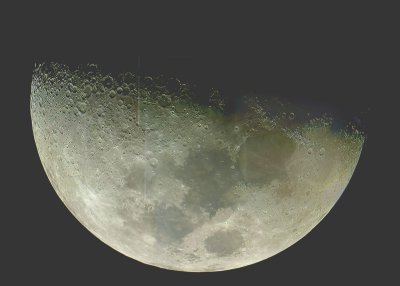 |
I set the telescope on the moon, and timed the passage of a lunar feature across the field of view, which enabled me to easily set the travel segment. I then put the Seeker at the centre of the Moon, and took successive frames till I'd covered the lot. It took about 18 frames - some were blank sky which I discarded - I was expecting this and I carried on till the Seeker refound the Moon surface. I tweaked about three of the placings where my common sense suggested it, but it was not really necessary to do this - I'd have just ended up with having to merge about 15 rather than 12 frames!
With my rather sloppy drives, the mosaic looks a bit messy, but the very problems with my drives would have made the task very much harder WITHOUT the Seeker. I intend to use it on a mosaic of M42 when I (belatedly) really get to grips with my Starlight Xpress CCD camera! What I've NOT looked into at all is the extent to which competitive telescope control software provides this facility - i.e. just how 'exclusive' this facility of the seeker is. It's a valuable usage of the instrument that I will certainly be using, and recommending. The original panorama is 2.8 megapixels, and the attached low res file doesn't really do it justice, though it does minimise the visibility of the imperfect seams!
John Kemp
(INFO on the AWR SEEKER)
For more information visit the owners site, Keith Venables.
18 inch Serrurier Truss telescope
Optical
18" F4.4Supplied by David Lukehurst/Norman Optical
Imaging camera - MX7C / 716
guide scope, Vixen 120S with MX5 ccd
Finder, 70mm Vixen
Tube assembly
Double Serrurier Truss, mass without mirror 20kg
Mount
Equatorial fork, home made, mass 100kg
Drive
14" worm gear supplied by Beacon Hill Telescopes, both axes
Motors and control, AWR Technology Intelligent Drive System
Pier
0.8 metre high 0.5m diameter concrete, set in a 1m cubed concrete foundation block
Observatory
3.2m dome, homemade
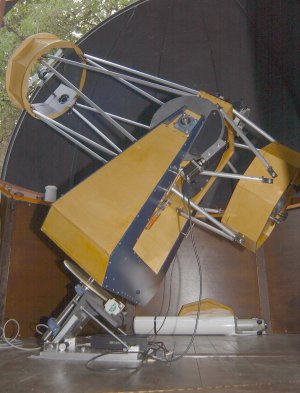
 |

|
This has come from Max in Australia. It is a major refit of a Meade Starfinder 16" telescope. New engineered equatorial head using the 1.5 inch Meade shafts in bearings, locally made worm wheel sets and AWR MOTOR/120 with a MICROSTEP Drive system providing GOTO performance with a maximum slew speed of 0.5 degree per second. To give an idea of scale the Drive Box is 28cm long. Intelligent Handset out of the picture. CLICK to view a high resolution image (64k) |
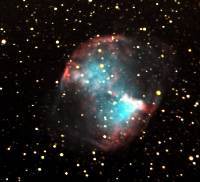
|
This stunning image of M27 was with a Starlight Xpress MX916 CCD camera
using STAR 2000 autoguiding and four separate exposures of 10 minutes through
LCMY filters. The telescope is a 50cm f4.6 Newtonian telescope driven by
AWR SYSTEM 4 with autoguiding option. 12th August 2000 through haze in the presence
of strong moonlight.
CLICK to view a high resolution image (74k) |
| AWR Technology The Old Bakehouse Albert Rd, DEAL, Kent CT14 9RD |
alan@buckman-hardy.co.uk 01304 365918 |